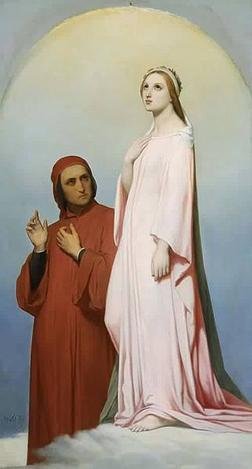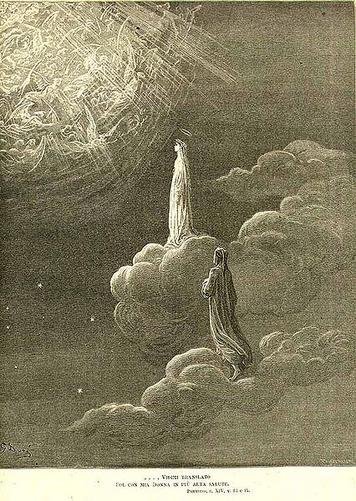ADSactly Poetry: The intertextual poetry of Ramos Sucre

Friends readers, about a month ago I shared with you a post about the Venezuelan poet José Antonio Ramos Sucre see (Cumaná, Venezuela, 1890 - Geneva, Switzerland, 1930), internationally recognized for the transcendence of his literary work. On this occasion, I bring you a text on a cardinal feature of his production, which constitutes an element of great presence in modern and contemporary universal literature: intertextuality (or transtextuality). I hope that it may interest you.
***
The erudite culture of Ramos Sucre -so often recognized and studied by his biographers and critics- has a privileged expression in its use of transtextuality (formerly called intertextuality), we would say with a category of current literary theory. Transtextuality (textual transcendence of the text) is conceived as the effective relationship -manifesta or secret- of a text with others, and has several types, according to the proposal of the French theoretician Gérard Genette (in his book Palimpsestos. Literature in the second degree, of 1982); among them the so-called "hypertextuality", that which occurs in every textual relationship that links a new text (the hypertext) to an earlier text (the hypertext).
Before going on, let us consider the significance and pertinence of the image used by Genette to allude to this literary key: the palimpsest. The researcher and theorist clarify it in this way:
A palimpsest is, literally, a parchment from which the first inscription has been scraped and replaced by another, an operation that has not irreparably erased the primitive text, so that it is possible to read the old below the new, as in transparency.
And then it goes on:
This state of things shows us, in a figurative sense, that one text can always hide another, but that it can rarely hide it completely, lending itself very often to a double reading in which at least one hypertext and one hypotext are superimposed.
The hypertext relationship (in short, intertextual) is clearly exemplified by Genette with the relationship between Virgil's Aeneid or Joyce's Ulysses and Homer's Odyssey, where the latter would obviously be the first text (hypertext) and the other two, in their own way, would be hypertext. The relation Odyssey - Aeneid would be given by imitation, because Virgil has imitated the epic model: he is no longer Ulysses but Aeneas. The relation Odyssey - Ulysses by transformation, since Joyce transposes the action of Odyssey to 20th century Dublin.

A necessary digression: the appreciation of this quality in the poet Ramos Sucre will surely become difficult to realize in a common reader, because it will require a wide cultural competence (literary, philosophical, etc.), in order to update what Umberto Eco called "Model Reader", that is, the strategies that the author traces for the ideal reading of the text, with which the full interpretative competence would be satisfied. To reach such a degree of thoroughness given the intellectual formation of Ramos Sucre is truly an enterprise that requires a treasure trove of readings that, unfortunately, in general, we do not have today. This does not deny that we can carry out our interpretative task as readers.
The Venezuelan writer Salvador Tenreiro in his 1989 book El poema plural (see another of his works on Ramos Sucre in digital version here, has applied Genette's theory, indicated above, to the study of Ramos Sucre's work, a study that I follow in this brief work. Tenreiro has formulated that "Ramos Sucre's writing projects, like no other in the country, innumerable hypertextual reflections"; this is so, because, as has been indicated by various critics, there is a relevant affinity between his work and that of several previous universal writers; as Tenreiro also affirms: "His writing is a dialogue with those who have preceded him".
The manifestation par excellence of hypertextuality in Ramos Sucre is given through the mention. Sometimes, in the texts of Ramos Sucre, it appears as a nomination, that is, the previous text is simply pointed out (for example, "Biblical Lesson"); but other times -and this would be its most important manifestation- the hypertextual mark slips into the textual discourse through the external speaker - "The Resipisence of Faust" original in Spanish.poesi.as/jrs25035.htm) and English version, "The secrets of the Odyssey", for example) or of the speaking subject, and the ramosucrean poem (hypertext for the case) becomes reminiscence, rewriting of the hyptext. In such cases, Tenreiro points out, it is a "representation where what has been read and what has been dreamed are fused".

Let's see it with one of Ramos Sucre's most emblematic and widespread poems (poem in prose, of which he was a master and modality in which almost all of his poetic work is written): "Prelude", from his first book, La torre de Timón, from 1925.
Prelude
I would like to exist amid empty darkness, because
the world damages my senses cruelly and life afflicts
me, impertinent lover whispering bitter stories.
By then my memories will have abandoned me:
now they flee and return with a rhythm of ceaseless
waves, they are wolves howling in the night
shrouding desert snows.
Reality's disturbed symbol, movement respects
my fantastic asylum; moreover, I will have scaled
it with death at my arm. She is a white Beatrice,
and, standing on the crescent of the moon, she will
visit my painful sea. Under her spell I will repose
forever and I will no longer lament offended beauty
or impossible love.

Dante and Beatriz Source
It is a poem that would illustrate the second case of hypertextuality pointed out in the use of the mention, where a subject speaks through the voice of an explicit grammatical self. This is the mode of enunciation that constitutes the major part of Ramosucreana's work. Without pretending to treat the poem in detail, we observe that it is spoken by a discouraged subject, suffering, mistreated by the immediate life and who wishes to isolate himself in the void, stripped of uncomfortable memories. In this first moment, the subject presents himself with the information that corresponds to him, and then, the hypothetical information to which he responds will be manifested.
In the first lines he has metaphorized life as an "impertinent beloved", and in the last paragraph, he will allude to his arrival at that desired retreat in a kind of wedding with death. Here are the first, very subtle hints of hypertextuality. Like Dante, author and subject of the Divine Comedy -this would be the hypothesis-, he will ascend to that stage of infinite grace, "of arm with death". We know that in the Divine Comedy, Dante, on his journey, will descend to hell and then go to purgatory guided by Virgil (author of Aeneid), but to ascend to paradise will be led by Beatriz, a female character -real or fictitious- of Dante's ideal love.
In Ramos Sucre's poem, the mention is invoked through Beatriz's nomination, fulfilling one of the characteristics of this textual strategy, as Tenreiro points out: the "sacralization of profane texts and names, belonging to the literary tradition". But this Beatriz, who invokes the hypertextual subject of "Prelude", unlike that of Dante, is identified with death: this, like Beatriz, leads him to that escape from "the sea of pains" that is life for him, to that eternal rest, to the "fantastic asylum". In association with snow, she is a "white Beatrice", and not an "impertinent beloved who tells me bitterness", as the subject of the life that afflicts him names it; moreover, Beatrice is symbolized with a visual element very present in one of the iconic representations of the Virgin Mary: "feet on the crescent of the moon" (note that the Virgin Mary is revealed to Dante in his penultimate experience in paradise, before the divine light). And finally, beauty and love, the two great classical values since Plato, from which the speaking subject has felt separated, unite in that salvation by death-Beatrix.
The intertextual (or transtextual, as it were) mood of Ramos Sucre's poems -characterized by their subtlety, obliqueness, perspicacity, complexity- constitutes, unobjectionably, one of the most differentiating, enriching and advanced elements for the Venezuelan poetry of his time, and even for the contemporary Spanish-speaking poetry.

Bibliographic references
Genette, Gérard (1989). Palimpsests. Literature in second grade. Spain: Edit. Taurus.
Parra, Guillermo (2016). José Antonio Ramos Sucre. Selected Works. Expanded Edition. USA: Noemi Press.
Ramos Sucre, José Antonio (1980). Complete work. Venezuela. Ayacucho Library.
Tenreiro, Salvador (1989). The plural poem. Venezuela: Ediciones La Casa de Bello.
As a reader, have you noticed cases of literary works where intertextual relations are present, in the sense presented here?
Thank you for your kindness in reading me.
Written by @josemalavem
Click on the coin to join our Discord Chat

Vote @adsactly-witness for Steem witness!
Witness proposal is here:
Go To Steem Witness Page
In the bottom of the page type: adsactly-witness and press vote.

Use small letters and no "@" sign. Or, click here to vote directly!
Thank you!
By then my memories will have abandoned me:
now they flee and return with a rhythm of ceaseless
waves, they are wolves howling in the night
shrouding desert snows.
Reality's disturbed symbol, movement respects
my fantastic asylum; moreover, I will have scaled
it with death at my arm. She is a white Beatrice,
and, standing on the crescent of the moon, she will
visit my painful sea. Under her spell I will repose
forever and I will no longer lament offended beauty
or impossible love.
Reality's disturbed symbol, movement respects my fantastic asylum; moreover, I will have scaled it with death at my arm. She is a white Beatrice, and, standing on the crescent of the moon, she will visit my painful sea. Under her spell I will repose forever and I will no longer lament offended beauty or impossible love.

It is a poem that would illustrate the second case of hypertextuality pointed out in the use of the mention, where a subject speaks through the voice of an explicit grammatical self. This is the mode of enunciation that constitutes the major part of Ramosucreana's work. Without pretending to treat the poem in detail, we observe that it is spoken by a discouraged subject, suffering, mistreated by the immediate life and who wishes to isolate himself in the void, stripped of uncomfortable memories. In this first moment, the subject presents himself with the information that corresponds to him, and then, the hypothetical information to which he responds will be manifested.
In the first lines he has metaphorized life as an "impertinent beloved", and in the last paragraph, he will allude to his arrival at that desired retreat in a kind of wedding with death. Here are the first, very subtle hints of hypertextuality. Like Dante, author and subject of the Divine Comedy -this would be the hypothesis-, he will ascend to that stage of infinite grace, "of arm with death". We know that in the Divine Comedy, Dante, on his journey, will descend to hell and then go to purgatory guided by Virgil (author of Aeneid), but to ascend to paradise will be led by Beatriz, a female character -real or fictitious- of Dante's ideal love.
In Ramos Sucre's poem, the mention is invoked through Beatriz's nomination, fulfilling one of the characteristics of this textual strategy, as Tenreiro points out: the "sacralization of profane texts and names, belonging to the literary tradition". But this Beatriz, who invokes the hypertextual subject of "Prelude", unlike that of Dante, is identified with death: this, like Beatriz, leads him to that escape from "the sea of pains" that is life for him, to that eternal rest, to the "fantastic asylum". In association with snow, she is a "white Beatrice", and not an "impertinent beloved who tells me bitterness", as the subject of the life that afflicts him names it; moreover, Beatrice is symbolized with a visual element very present in one of the iconic representations of the Virgin Mary: "feet on the crescent of the moon" (note that the Virgin Mary is revealed to Dante in his penultimate experience in paradise, before the divine light). And finally, beauty and love, the two great classical values since Plato, from which the speaking subject has felt separated, unite in that salvation by death-Beatrix.
The intertextual (or transtextual, as it were) mood of Ramos Sucre's poems -characterized by their subtlety, obliqueness, perspicacity, complexity- constitutes, unobjectionably, one of the most differentiating, enriching and advanced elements for the Venezuelan poetry of his time, and even for the contemporary Spanish-speaking poetry.

Bibliographic references
Genette, Gérard (1989). Palimpsests. Literature in second grade. Spain: Edit. Taurus.
Parra, Guillermo (2016). José Antonio Ramos Sucre. Selected Works. Expanded Edition. USA: Noemi Press.
Ramos Sucre, José Antonio (1980). Complete work. Venezuela. Ayacucho Library.
Tenreiro, Salvador (1989). The plural poem. Venezuela: Ediciones La Casa de Bello.
As a reader, have you noticed cases of literary works where intertextual relations are present, in the sense presented here?
Thank you for your kindness in reading me.
Written by @josemalavem
Click on the coin to join our Discord Chat

Witness proposal is here:
Go To Steem Witness Page
In the bottom of the page type: adsactly-witness and press vote.

Use small letters and no "@" sign. Or, click here to vote directly!
Thank you!
As a person who writes, but very especially as a person who reads, I feel that we are the books that we have read and that have left traces in us. At times those early stories speak through us; those stories are there latent, like seeds that reproduce throughout the world. In the case of Ramos Sucre, a highly educated man who had one of the most complete libraries for the time in Cumaná, it was inevitable that famous stories and authors would echo in him and in his own work. Sometimes the play with intertextuality is as evident as traces in the sand, but other times it is imperceptible air, hence the difference of a good reader. Thank you for sharing an excellent post, with an interesting subject and an unmatched poet, @josemalavem.
I appreciate your appropriate comment, @nancybriti. Our reading encyclopedia (as Umberto Eco calls it) is anthological; in it there remains a selection that we don't know exactly what they respond to. In Ramos Sucre, as in many other readers/writers, this "anthology" is expressed, sometimes in a manifest way, sometimes obliquely or elusively. Greetings.
I heard venezuelan poet José Antonio Ramos Sucre see's name but I did not read any her books.he is a very good writer.i has got some sense of your post, literary practices work a lot hard.literature is not practiced by everyone.
Thank you for your reading and comment, @lover1. In my assessment, Ramos Sucre is one of the most important Spanish-language writers in modernity. If you read in Spanish, you can find a lot of his work on the internet.
Interesting and well written article @josemalavem. Aside the hypertextuality context, it got me to find out about another great poet. Read some of his translated texts, and the allover vibe reminded me of Fernando Pessoa.
Thank you. Keep up the steem.
Thank you for your attentive reading and comment, @vicentwalker. It is good that my article has served to interest you in the poetry of this unparalleled writer. The relationship he has with Pessoa is interesting; I wouldn't know if Ramos Sucre ever read it. RS did not use heteronyms in his poetry, but he did assume the voice of different poetic subjects, what critics call "mask". Greetings.
He was a great poet. I have always wondered how it was possible for him to emerge in that environment and at that time. His poetry is also so complex, so linguistically charged. I have been there in Sucre state, and the cultural richness is impressive even in situations of such precariousness, I was there in Cumaná, in his house, also in the house of Andrés Eloy and in that of Cruz Salmerón. Your article is very good.